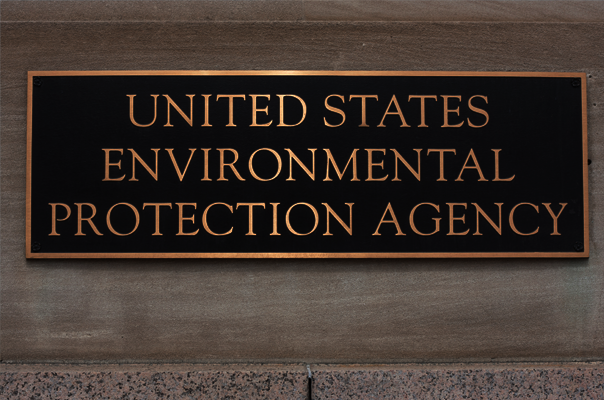Dubious Arguments in Tier 3 Study
The EPA is planning to tighten its gasoline regulations from Tier 2 to Tier 3 standards, which would reduce permissible sulfur content from the current 30 parts per million (ppm) down to 10 ppm. (I have written a full overview of the economic issues surrounding Tier 2 and Tier 3 in this earlier IER post.) In contrast to those warning about the impacts on gasoline prices from even tighter regulations, a study from Navigant Economics seeks to defuse these concerns, claiming that Tier 3 standards would have no impact on retail gasoline prices, and would actually help the economy. In this blog post I’ll tackle just two of the more dubious claims in the Navigant study.
Tier 3 Standards Wouldn’t Raise Prices at the Pump?
The issue that most concerns the average American is: “Will these new Tier 3 standards on gasoline sulfur content result in higher prices at the pump?” The Baker & O’Brien analysis (B&O) estimated that Tier 3 (as formulated at the time of the analysis) would impose upfront compliance costs on refiners of $10 billion, and impose continuing higher costs on refiners of 6 to 9 cents per gallon. The analysis did not explicitly predict that pump prices would rise by the exact same amount, but inasmuch as the refining industry is a competitive market with narrow margins, a massive new regulatory burden will surely lead to higher pump prices for the end consumer. After all, when proponents of a carbon tax talk of applying it “upstream” to reduce enforcement costs, nobody has any illusion that this won’t trickle down to the actual motorists and induce them to drive less and to buy more fuel-efficient cars: that’s the whole point of a carbon tax, in the eyes of its environmentalist proponents.
Yet the Navigant study disputes this. The authors first challenge the cost estimates in the Baker and O’Brien study, relying on rival estimates by a MathPro study (which estimated industry compliance costs at much lower levels). The B&O and MathPro studies used different methods to reach their estimates, and one would have to reproduce their work to decisively say which estimate is the more plausible.
However, what we can say with confidence is that the Navigant Study is on shaky ground when it claims that a large compliance cost imposed on the refining industry—whether it is as large as B&O estimated, or a more modest figure as MathPro concluded—will have no noticeable impact on retail gasoline prices. As already stated, this flies in the face of basic price theory: The refining and retail gasoline markets enjoy real-world competition, meaning that their members do not enjoy monopoly or “oligopoly” profits. If the EPA imposes a massive new regulatory cost, raising the costs of doing business, then this will reduce margins. Other things equal, this will make the refining / retail gasoline industries less appealing to firms, meaning the supply will be reduced. With the same consumer demand for gasoline, the end result is a higher price per gallon.
This logic is fairly unassailable. If the government raised the federal gasoline tax, this would surely lead to an increase in prices at the pump—even if the tax is levied directly on the retailers, not on the motorists at the checkout counter. Now it’s true, it might not be a one-for-one increase; the issue involves what economists call “relative elasticities” on the supply and demand side of the market. But the point is, when a new tax is imposed on the producers in a market, some of that burden is absorbed by the consumers in the form of higher prices.
Now the authors of the Navigant study both have PhDs, so they are obviously aware of the textbook framework above. What they are implicitly assuming, therefore, is that in the refining / retail gasoline markets, the producers pick up all of the burden of a new regulation or tax. This is an interesting claim, since gasoline is considered a fairly inelastic good, meaning that a price hike of (say) 10% will not reduce the number of gallons purchased by the same percentage. Thus, compared to other goods and services, we would expect a hike in costs in this area to fall more heavily on the final customers.
How then do the Navigant authors reach their surprising conclusion? They rely on a regression analysis of the earlier Tier 2 studies:
Regression analysis shows that Tier 2 regulations, which required a reduction in the average sulfur content of gasoline from 300 ppm to 30 ppm, had no material impact on the retail price of gasoline. The regression analysis took into account several factors identified in an FTC study that were expected to influence the retail price of gasoline. These factors include the cost of crude oil, refinery margins, the 2005 hurricanes, the 2006-07 transition to ethanol, and the 2008 global recession. Our model explains more than 99 percent of the variation in retail gasoline prices. The price of crude oil was the most significant determinant of the retail price of gasoline, and refining margin was a distant second in importance. Importantly, Tier 2 had no statistically significant impact on the retail price of gasoline. [Bold added.]
An in-depth critique of the Navigant argument would require a statistical analysis beyond the scope of the present blog post. But to summarize the problem in plain English: The Navigant authors are trying to model the actual historical price of gasoline, to see if the introduction of Tier 2 standards had any noticeable impact on gasoline prices, over and above the movement in prices that can be explained by other variables. In particular, the Navigant authors included “refinery margins” in their list of other explanatory variables. Since Tier 2 standards didn’t show up in the regression output as a statistically significant factor, the Navigant authors conclude that they had no impact on gasoline prices.
The problem here is that the Tier 2 standards—if they did have an effect—would of course work through refinery margins. Just think through the standard textbook analysis of the impact of a new tax. When the government levies a higher tax on producers, they can’t automatically “pass it along” to consumers. If they could, they would have already done so, before the tax came along.
No, what happens (in the textbook treatment) is that a new tax on producers causes them to reduce supply (i.e. the supply curve shifts left). Why does that happen? Because they are making less profit with the tax, than they were before. In other words, their margin has been reduced.
To repeat, the immediate effect of a large new compliance cost imposed on refiners, will be to reduce their margin. (They earn a certain amount of revenue at the existing retail price, and now their costs of doing business have suddenly gone up because of the tighter Tier 2 standards.) Thus to say, as the Navigant authors do, that they can explain the change in gasoline prices after Tier 2 by reference to crude prices, refiner margins, and other variables, doesn’t really rule out the possibility that Tier 2 standards caused gasoline prices to go up. Hence, the Navigant study has given us no reason to think that Tier 3 standards will be benign either.
Job Creation Praised for Its Own Sake
Another major problem with the Navigant study is that it counts job creation among the benefits of Tier 3 standards:
As shown in Table 6 below, installation of the refinery modifications produces almost 24,500 jobs for full time equivalent employees with total associated employee compensation of $1.161 billion for each of the three years of installation. The value added to the national economy is $2.027 billion each year. Federal, state, and local taxes on the corporate profits and personal income created by the refinery upgrades is $0.502 billion per year. According to our analysis, the annual operation of the refinery modifications produces almost 5,300 jobs for full time equivalent employees with total associated employee compensation of $0.294 billion. The value added to the national economy is $0.632 billion.
The problem here is that this type of analysis would work for any proposed regulations. For example, if the EPA required that refiners hire workers to dig ditches with spoons, and then fill them back up again, then this too would “add value to the national economy” according to the salaries paid to attract these spoon-ditch-diggers from other possible lines of employment. The implicit assumption in the Navigant analysis is that there is a bottomless pool of surplus labor, such that diverting workers and other resources into meeting Tier 3 standards has no opportunity cost. That assumption could be forgiven in the current depressed economy, but the Navigant study says upfront that Tier 3 standards won’t go into effect until at least 2017.
Conclusion
No one disputes that the EPA’s proposed Tier 3 standards—which would reduce sulfur content in gasoline by 67%—would impose billions of dollars in upfront compliance costs on the refining industry. The argument has just been over how many billions of dollars, and whether this massive new cost will be passed along to motorists.
Common sense and standard economic logic suggests that such a large cost increase will indeed at least partially show up in the form of higher gas prices, rather than being absorbed fully be refiners. The statistical analysis that the Navigant study uses to argue otherwise, is dubious because it includes “refiner margins” as one of the variables in addition to earlier Tier 2 standards. This is a problem because the Tier 2 standards would have worked their effects (if there were any) through refiner margins.
Finally, the Navigant study should not be counting job creation among the benefits of Tier 3 standards. In the long run, with flexible wages the economy can “create” as many jobs as there are people in the work force. If the EPA causes refiners to hire workers to satisfy Tier 3 regulations, these workers necessarily can’t be doing something else productive. The regulations may or may not be economically efficient, but the workers needed to achieve compliance are a cost of the regulations, not a benefit. Put differently, if we could achieve the EPA’s desired sulfur content without using any labor, that would be a blessing, not a curse. The Navigant study gets this backwards, and thereby overstates the potential benefits of Tier 3 standards.




